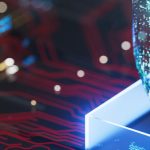In a sunlit room, many years from now, a common scene repeats. A child’s small fingers awkwardly grab a colored pencil and grapple to subject it to his will. Each stroke he makes is a burst of concentration and wonder. His father watches, heart brimming as the child’s tongue pokes out in deep focus and lines and curves take shape on a piece of paper. There’s a clumsiness in the execution, yet each line is a triumph of expression. The finished piece, a whirlwind of colors and shapes, may not find a place in an art gallery but will hold a place of pride on the father’s desk, a daily reminder of pure, unfiltered creativity. In a future where Artificial General Intelligence (AGI) may outpace humans in intellectual tasks, this scene underlines a profound truth: the joy of creation and the awe of witnessing human artistry is irreplaceable and enduring.
Art today, in the context of GenAI
From the neolithic cave paintings to the modern CGI-enhanced films on Netflix, creation tools have evolved, but the essence of art remains unchanged. The rise of generative AI in artistic endeavors is barely the latest chapter in this evolution. GenAI, in its current form, functions on prediction and statistics. It assimilates millions of texts and images, recombining them in novel ways. This might seem creative, but it fundamentally differs from what we call art.
Consider Leonardo da Vinci’s Mona Lisa. While AI can replicate this iconic painting thousands of times or create thousands of different pieces by mimicking the technique, each copy lacks the intrinsic value of the original. The masterpiece is not just a visual image; it’s a narrative of its time, a product of the unique historical and cultural context, and a reflection of a singular human mind and story. Though visually similar, AI-generated copies are devoid of the rich historical tapestry and the personal creative journey that gives the original its worth. Current GenAI, sophisticated as it may be, is akin to a tool capable of producing countless imitations of the Mona Lisa. Yet, these reproductions are void of the original’s artistic soul.
However, this does not mean that current GenAI lacks a place in the creative process. When in the hands of an artist, GenAI transforms from a mere replicator to a collaborator, extending the artist’s capabilities and providing new avenues for expression. An artist can harness GenAI as a tool, infusing it with his unique perspective, emotional depth, and creative intuition. This collaboration can result in works that are technically innovative and rich in the human touch that GenAI alone cannot provide. True artistry lies in how the artist guides the AI, merging the human element with the machine’s capabilities, thus creating art that resonates with the depth and authenticity of human experience.
Art tomorrow, in the context of AGI
As we venture into the future, the advent of Artificial General Intelligence (AGI) promises capabilities comparable or even superior to human intelligence. This development raises intriguing questions about the nature of creativity and art. With its potential for original thought and understanding, will AGI create art that resonates with humans on a profound level?
We don’t know. Artistic work from machines may be viewed in the future as mere passing curiosities, something that captures your attention momentarily. Still, you forget easily because it doesn’t impact you. Yet, there’s also a possibility that AGI, with its unique perspective, could produce art that humans find genuinely compelling.
The creation of art is a deeply personal odyssey. When an artist embarks on creating a new piece, they engage in a dialogue with their medium and inner selves. Each decision, from the broadest concept to the smallest detail, reflects many personal experiences, thoughts, and emotions. The struggle to shape an idea into a tangible form can be laden with frustration, self-doubt, and countless revisions. It is also punctuated by profound joy and satisfaction when vision and execution align. Each piece of art is the culmination of an intimate journey that imbues the artwork with a depth and complexity that resonates with others on a profoundly human level.
The finished artwork is a testament to this journey, a physical manifestation of the artist’s world made visible to others. It bridges the creator and the observer, allowing a glimpse into the artist’s soul and perspective. The beauty of this connection lies in its relatability. Viewers may see reflections of their own experiences and emotions in the artwork, creating a sense of shared humanity. They empathize with the struggle, recognize the triumphs, and appreciate the artist’s vulnerability. This connection is born from the intrinsic ability of humans to understand and share the feelings of others and to see parts of themselves in the experiences of their fellow beings.
In contrast, even if future machines pass through a similar creative process, the human experience will be absent. It will be the machine’s experience and probably an alien experience for us. We relate to art not just because of its aesthetic appeal but because it echoes our lives, joys and sorrows, triumphs and defeats. The stories behind the art and the glimpses of the artist’s journey are what we connect with on a deeply personal level. They stir something within us beyond appreciating beauty or technique – a recognition of our shared journey through the tapestry of human experience. Even if we come to appreciate art from machines, we will never lose the urge for human art forms.
In a future increasingly shaped by AGI, the artistic endeavor is a testament to the irreplaceable value of human connection. As we navigate this new era, we hold onto the joy of creation and the awe of human artistry, reminding us of our connection to the world and each other.





